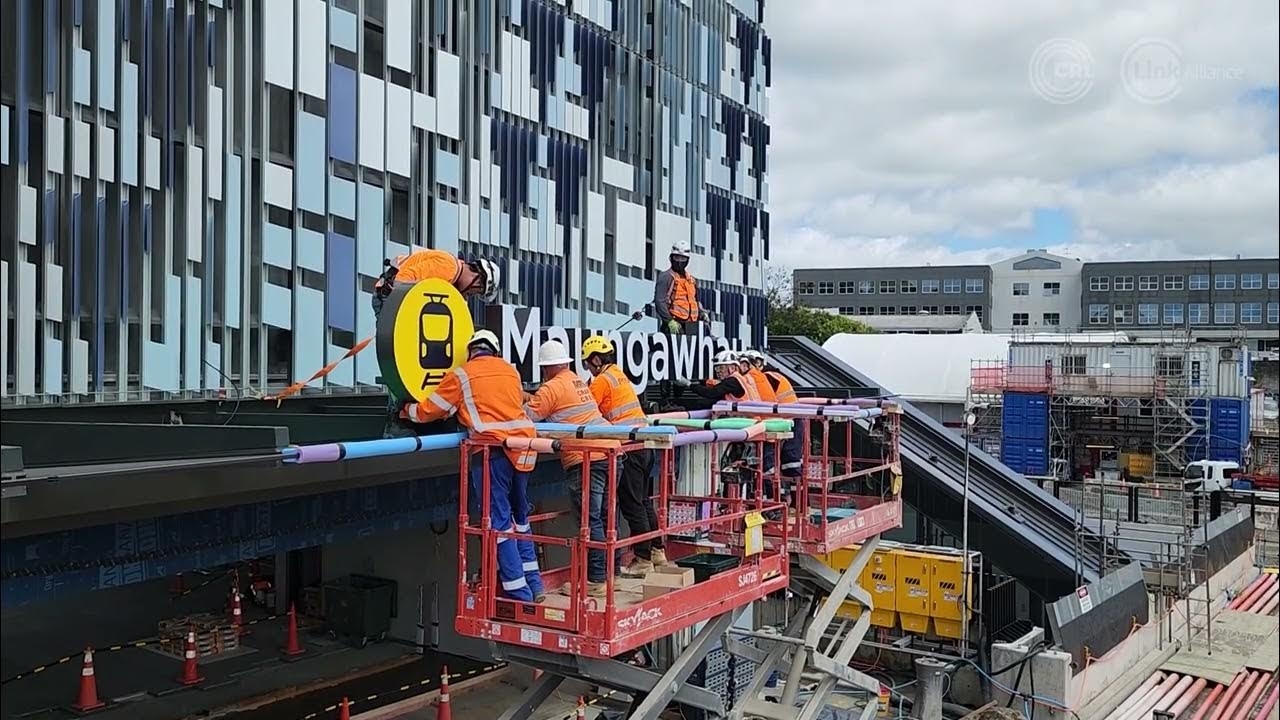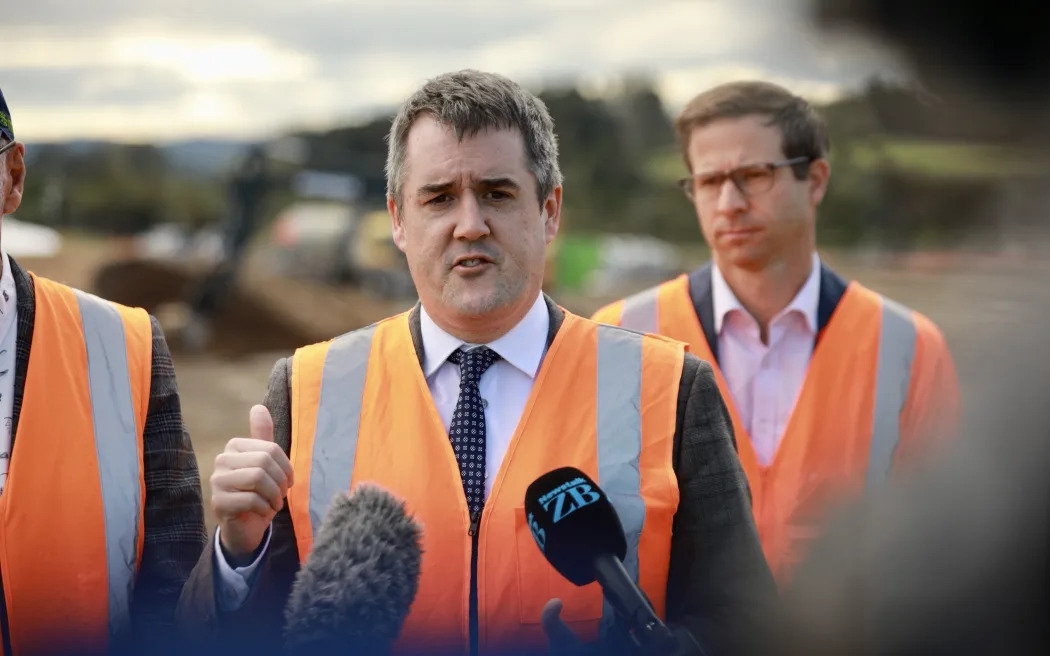The Government’s sweeping overhaul of the Resource Management Act (RMA) has been framed as a long-overdue attempt to remove one of the most persistent bottlenecks in New Zealand’s economy: the housing and construction consent system.
For decades, builders, developers and investors have cited the RMA as a major contributor to high house prices, stalled infrastructure, and systemic uncertainty.
Housing and Infrastructure Minister Chris Bishop describes the RMA as a “failed experiment” that has contributed to New Zealand’s global reputation for unaffordable housing. “We’re reforming our planning system after thirty-three years with the failed experiment that is the RMA,” Bishop said at the 2025 LGNZ Conference. “It doesn’t make sense that we have single-storey houses on quarter-acre sections a stone’s throw away from stations that, in a year or so, will see trains every few minutes.”

Chris, Bishop, Housing and Infrastructure Minister
The government’s response includes both immediate and long-term strategies. The Fast-track Approvals Act, which came into effect in December 2024, allows nationally or regionally significant projects to bypass the usual RMA processes. But the centrepiece of reform is a full legislative replacement, due to be enacted by mid-2026, comprising the Planning Act and Natural and Built Environment Act.
These reforms are designed to simplify consenting, enforce national standards, and deliver integrated planning that finally aligns infrastructure and land use. But critics argue that the gap between ambition and action remains wide – and that tension between national and local priorities is far from resolved.
The Cost of Inaction
According to Infrastructure Commission data cited by Bishop, the average time taken to obtain a consent more than doubled between 2014 and 2019. Annual costs for RMA-related consenting now top $1.3 billion.
The Minister is blunt: “This is a colossal amount for a resource management system that has consistently failed to deliver better outcomes.”
Bishop’s goal is to decouple economic growth from house price inflation and instead drive investment in infrastructure and productivity. But recent decisions have complicated the narrative. The government cancelled 212 Kāinga Ora housing projects – scrapping 3,479 planned homes – at a time when industry capacity is under severe strain. According to a 2025 industry survey, 24% of builders report operating at less than half capacity, and two-thirds report cancellations or significant project delays.

Stalled Wellington Kāinga Ora Arlington development, which is yet to produce any homes. Photo / Mark Mitchell
The move has drawn criticism from across the sector. Recruiters liken the market to the downturn of the early 1990s. Bernard Hickey, writing in The Kākā, accused the government of saying one thing while doing another: “The trouble is his initial actions… have shattered the construction sector’s momentum, forcing hundreds of firms into liquidation and 17,000 builders out of the industry and/or country.”
Builders, Developers, and the Demand for Change
North Island builder-developer John Penny and Matt Faulkner of Penny Homes offer a blunt, first-hand view of the limitations of the current RMA — and a healthy dose of scepticism about how much the proposed reforms will actually fix.
Matt Faulkner, the company’s Commercial Projects Manager, says the current system is defined by delay and inconsistency: “A typical resource consent for us could be anywhere from six months to 18 months, to two years. It stifles development.” He points to “intangible risks” such as inconsistent planning interpretations, personality clashes with council officers, and wide variations between jurisdictions as key challenges.
“It is very grey, and that’s perhaps the biggest risk — not necessarily satisfying the typical engineering issues, which are solvable,” he says.
Managing Director John Penny agrees the process is cumbersome and inefficient. He worries that new legislation may not deliver clarity unless the same local authorities are better aligned with central policy: “It concerns me — are all the local authorities and councils on board with what they’re trying to produce here?”

Whakamaru house in Taupo – Photo / Penny homes
Faulkner is cautious about promised improvements: “But, we feel that there has probably not been enough engagement with stakeholders within the industry and particularly developers such as ourselves, smaller builders and larger builders. We feel the people who will be making the rules are probably the same stakeholders that we deal with now, just rewriting a new rule book.”
Penny also sees potential clashes from the fast-track regime with Councils still being challenged to supply services where they’re already at capacity. “Watercare is saying we’re just not going to have water to that district over the next six or seven years… and I don’t know any RMA that’s going to fix those sorts of issues without substantial investment. Who pays?” he says.
The pair say the cost burden is increasingly shifting to developers through skyrocketing development levies. “We’ve seen development levies go from $30,000 to $80,000 in the Waikato,” says Penny. “That’s costing more than the whole civils to do the section. Add to that rate increases of 14–15 percent annually, and the question becomes one of affordability — not just for home ownership but even for operating a home.”
But they can’t just wait around and hope for better things. “We’re here trying to get on,” says Faulkner. “We can see that there’s housing required within this country, and we’re standing here with solutions to fix it. But it feels as though the wider stakeholders aren’t being engaged to formulate a plan.”
Still, Penny remains cautiously hopeful: “We’re totally on board with reform — but someone needs to police it, enforce it, and actually make it happen. It’s too slow, too costly and almost antiquated the way we do things.”
The Registered Master Builders Association has long advocated for consent reform. In its 2023 manifesto, the organisation called for a system that delivers “greater certainty and faster outcomes for our members. The current system adds months and thousands of dollars to every project.”
Minister Bishop says the new system will do exactly that. “The future system will be less complex and include greater standardisation,” he said in a July 2025 Q&A. “All builders and developers will benefit from the narrower scope of the new system and greater use of standardised zones, which will result in fewer resource consents.”
Under the new legislation, many activities that currently require discretionary consents would be permitted as of right if they comply with nationally prescribed rules. These include simplified land use zones, a narrower definition of ‘adverse effects,’ and reduced duplication between councils. This is expected to create a more consistent national framework, removing the variation that frustrates developers working across regions.
Still, the transition from the current system to the reformed regime will take time. Councils will need to adopt new plans and frameworks, public consultation will remain essential, and industry will require clarity to adapt its practices.
Infrastructure, Integration and the Missing Links
Nick Leggett, CEO of Infrastructure New Zealand, is a vocal supporter of the reforms, but with caveats. He argues that the RMA’s fragmented processes have discouraged investment, delayed housing supply, and driven up costs.
“Processes under the RMA are often fragmented and inconsistent across jurisdictions,” Leggett told Industry Insider. “The complexity and the time delays add significant costs, discourage investment, and ultimately delay housing supply.”

Nick Leggett, CEO of Infrastructure New Zealand
Leggett emphasises the need for integrated land use and infrastructure planning. He believes population planning must also become a core part of the system, so infrastructure and housing delivery can anticipate and match demographic change rather than lag behind it.
He points to systemic issues: poor alignment between central and local government, weak spatial planning, and a lack of funding tools for local authorities. “Infrastructure should be a leading enabler, not a reactive one,” he says. “We need national consistency and clarity, and we need local delivery capability to match.”
Leggett also warns against relying solely on legislative change. “Celebrating a new piece of legislation is great… but does it actually do what the country needs it to do? We’ll only know when it works.”
Leggett is particularly critical of the lack of consistency in planning around major infrastructure nodes. He described the failure to allow high-density development around City Rail Link stations as “appalling,” calling it a clear example of local planning undermining national infrastructure investment. He also argues that New Zealand must stop reinventing planning policy with each change of government and instead build bipartisan consensus around long-term solutions.
“There needs to be real societal and citizen pressure to keep what works, not continually change,” he said. A centralised framework, he believes, must still preserve local input, especially at the early spatial planning stage. “We can centralise the administration, but we must ensure the local voice is not lost,” he said. “It’s not impossible, and it is necessary for confidence in the system.”
Local vs National: The Tension Remains
A recent example underscores the core tension between national housing goals and local planning discretion. In July 2025, the Government directed Auckland Council to upzone land around City Rail Link stations, including Maungawhau, Kingsland, and Morningside. The intention is to allow greater housing density near high-frequency transport hubs.
“Successive governments and councils have failed to grasp this opportunity,” said Bishop. “This is how modern, growing cities all around the world operate, and now it’s Auckland’s turn.”
The move required the Council to finalise a plan by October 10, despite previous agreements that allowed Auckland to opt out of national medium-density rules.
Auckland Mayor Wayne Brown supported the principle but emphasised location: “We need more development along rapid transit corridors and where we have invested in significant infrastructure, while still protecting the quality of our urban areas.”
The case illustrates a broader theme: while central government seeks consistency and acceleration, local governments remain gatekeepers for implementation. That tension has plagued past reforms and will likely test the resilience of the current agenda.

Maungawhau Station Sign Installation – Photo / City Rail Link
The Path Ahead
The legislative roadmap is clear. Draft bills for the Planning Act and Natural and Built Environment Act will be introduced in late 2025. The government aims to pass both laws by mid-2026. Select committee processes, public submissions, and regional plan development will follow.
Meanwhile, the Fast-track Approvals Act is already in force. For developers of large-scale housing, commercial precincts or infrastructure, the new pathway offers the promise of faster decision-making through expert panels. But for the majority of construction professionals, meaningful change will depend on how well the new laws are implemented and adopted locally.
Builders, planners and investors are watching closely. Bishop insists the reform is real: “The new system is designed to speed up and reduce the overall cost of development and infrastructure. I encourage builders and developers to engage in the process.”
Whether the system delivers on its promise remains to be seen. But after thirty years of delays, cost blowouts, and policy churn, the industry is ready for change. According to an RNZ report from July 16, 2025, citing his remarks at the Local Government NZ conference, Bishop said: “There is little point in progressing long and costly hearings on a plan change that will be incompatible with the new planning system, or probably won’t even be complete by the time the new system is switched on.”
The RMA may be on the way out, but it still has a sting in its tail. The question is whether the system that emerges will be bold enough, simple enough, and fast enough to meet the challenge it has inherited.

